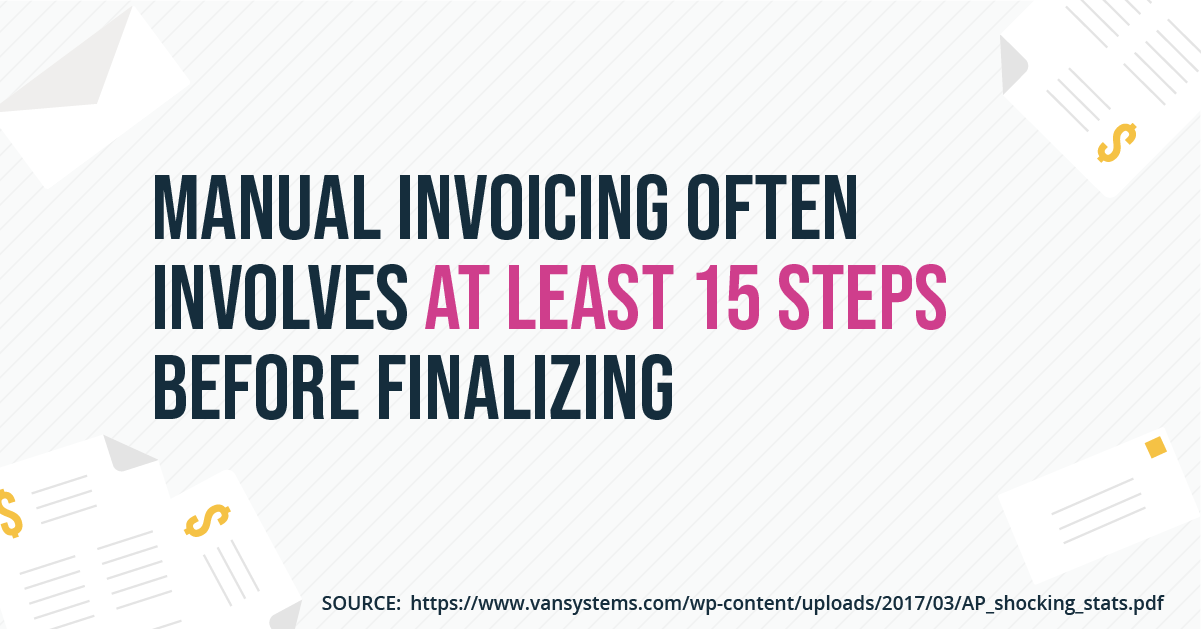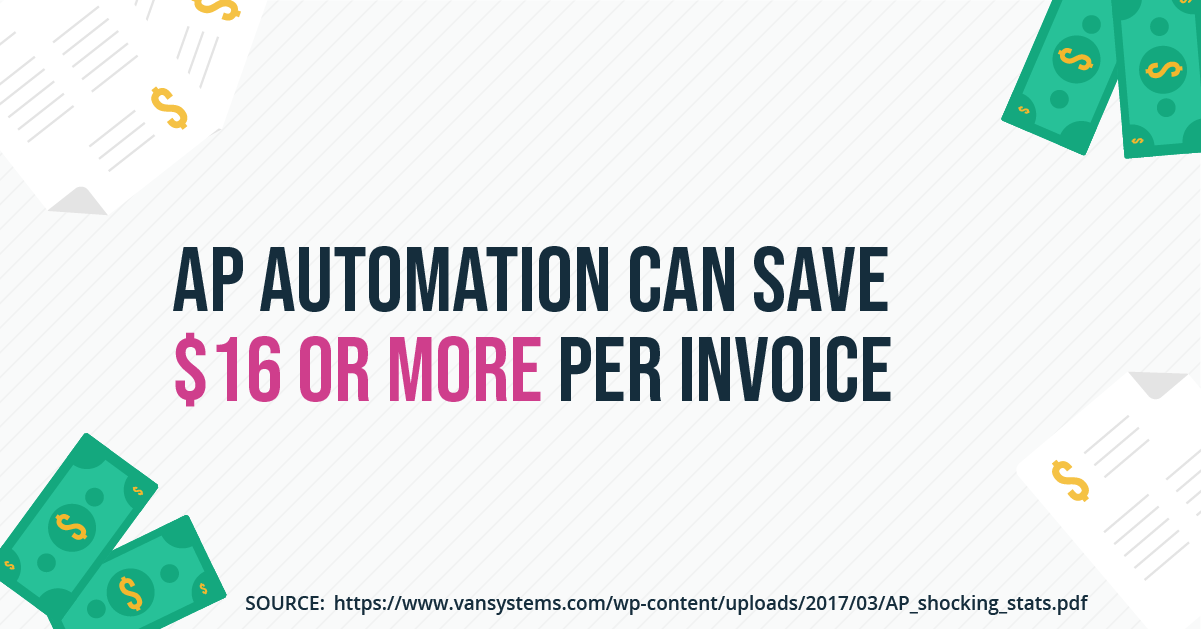The AP Efficiency Handbook

When was the last time you took a long look at your company’s AP process? There’s a good chance your business is wasting time and losing money on an overly complex, inefficient AP process.
As businesses grow, their needs change. Yet, many companies tend to stick with processes because “That’s the way we’ve always done it!”
If your AP process is overly complex, disjointed, or just hasn’t been reviewed in the past few years, it may be time for an overhaul.
Why Does AP Efficiency Matter?
When it comes to business, time is money. When looking to increase efficiencies, however, many businesses look to processes connected to revenue generation — can the manufacturing process be streamlined? Can the cost of supplies be reduced? Can we get a bulk discount on shipping?
The accounts payable department often gets overlooked, which is a mistake.
Overpayments, double payments, late payments, and even fraud can cost businesses thousands of dollars each year. In addition to financial losses, resource losses occur when employees waste time chasing down invoices, searching for purchase orders details, or following up on approvals manually.
Resource costs are just as real as financial costs, but they are often harder to spot since they don’t show up as a loss on a financial report.
Of course, AP efficiency should not come at the cost of accuracy. In many cases, improving the efficiency of your AP process can also reduce errors, which in turn, prevents your company from losing money.
By improving your AP department’s efficiency, your business can prevent AP fraud, make better use of resources, reduce payroll costs, increase cash flow, and provide better service to both your suppliers and your customers.
8 Strategies for Increasing Efficiency in the AP Department
Many organizations continue to rely on traditional invoice processing, which can be slow, unreliable, and prone to errors.
SaaS tools were designed to make the AP process easier. And they have, however sometimes invoices are sent to the specific department they worked with, rather than AP.
Other times, vendors send paper invoices, multiple times, which can lead to repeated payments Despite the improvements, there is still a great deal of frustration and inefficiency in the AP process.
If you are frustrated with your current process and are looking to increase efficiency in your accounts payable department, here is what you need to know.
Start By Build a Better Relationship With Your Vendors
One of the simplest strategies for improving AP efficiency is to build and maintain solid relationships with vendors and suppliers. How does this impact efficiency, you may ask?
Consider this: What happens if you cannot make a payment on time? If you have spent time building a good relationship, you may be able to negotiate a short deferral while still getting the goods or services your business needs to keep running or negotiate a longer payment term.
You can also reduce wasted time by ensuring your vendors understand what your business needs. They may be able to offer discounts or additional tools or services that can improve your business.
How you go about building a better relationship will vary based on your industry and business size. However, one simple step is to name a single point of contact for each vendor. Then, encourage this employee to build a relationship by:
- Meeting regularly to make sure the vendor understands your business’ goals and what sets your needs apart.
- Explaining your business’ long-term goals and vision.
- Asking about their needs; for example, they may prefer to communicate via email rather than by phone or use a collaboration tool like Slack.
- Sending birthday wishes and holiday gifts to show appreciation.
These simple steps can go a long way to building a stronger, more personal relationship with your vendors.
Centralize The AP Process
Streamlining your AP process means different things for different companies. However, the basic steps remain true across all business sizes and structures. If your business has multiple locations or lines of business, you may use several different invoice tools, suppliers, and even entirely different AP processes.
A multipronged approach can waste time and resources. Instead, have one group in charge of handling all invoicing, bill receipts, payment processing, and purchase orders across your entire business.
This will increase accountability and make it easier to take the following steps.
Reduce Redundant or Unnecessary Steps
Is your current accounts payable process complicated and overwhelming? Take the time to review every detail of the process and see what steps can be eliminated.
Redundant or unnecessary steps can create a complicated, less efficient process. Reducing unnecessary steps can build a leaner, more efficient accounts payable process that can save your business money, increase cash flow, and also reduce human errors.
For example, does every invoice need to be approved by a manager? Could invoices from regular vendors under a certain amount be automatically approved? Does every invoice truly need to be approved by an executive? Are there duplicate steps? Consider each step of your current process and discuss if it is actually necessary.
Go Paperless
If you are still managing the AP process by hand, it is time to digitize your process. Paper gets lost and can make collaboration incredibly difficult. For example, with a paper process, if you want to know if an invoice has been paid, you have to track down the person responsible for that part of the process, and then they have to track down the actual piece of paper.
Going digital can reduce the time and the labor involved in getting invoices paid.

Instead, consider digitizing and automating receipt delivery, dispute resolutions, and other tasks. Any steps that can be handled without active input from your team will save you time and money. In addition, a digitized process reduces the chances of human error.
Document the AP Process
Is knowledge of your AP process siloed into one or two employees? What happens if a key person from the AP process goes on vacation, takes time off for medical issues, or retires?
As you look for inefficiencies in your process, document how specific tasks are handled. When does an invoice need executive approval? Does one vendor have a different payment process? Getting this down in writing will make it easier to spot inefficiencies and make help keep the process rolling when key employees take leave or move on.
Look for Discounts
You want your customers to pay on time and quickly, right? Your vendors want the same thing. As a result, many vendors offer an early payment discount if you pay, for example, in net-30 versus net-90. Additionally, some vendors will offer reduced interest rates after you make a certain number of payments on time and in full.
Which of your vendors charge late fees? Make a note to ensure those vendors get paid on time to avoid paying more than you need too.
Finally, consider asking about bulk discounts. You can often receive a sizable discount on products when you purchase a certain amount. This can certainly save your business money, but make sure you will use the product before it goes bad to avoid waste.
Set Reminders to Prevent Late or Missed Payments
Take a proactive approach by setting reminders to make payments on time (or early, for vendors that offer discounts!) Reminders can help your business anticipate expenses and prevent late fees. It can also go a long way toward improving vendor relationships, as well.
Most accountancy software, including QuickBooks, have this feature.
For Increased Efficiency, Look to AP Automation
The best way to increase AP efficiency is through AP automation. Automation can reduce human errors, prevent lost invoices, ensure payments are made on time, and streamline communication. And, it can save your business $16 or more per invoice.

source: https://www.vansystems.com/wp-content/uploads/2017/03/AP_shocking_stats.pdf
Using AP automation, your business can import and log invoices automatically, match invoices with their POs, and even forward invoices that require approval to the correct person. You can even set up access for suppliers to give them visibility to the process and the ability to answer questions directly.
Need to know if a specific invoice has been paid? Using an AP automation platform, anyone with access can log in, view the PO, invoice, see if it is waiting on approvals, and see if payment has been rendered. In addition, your business can set up alerts to help prevent errors and reduce fraud.
Final Thoughts
It is time to take your AP process into the 21st century. Outdated manual AP processes are inefficient and error-prone. Start by reviewing your AP process for reductant steps and build better relationships with your vendors. Then, look for ways to streamline the process by going digital and setting reminders to prevent missed payments.
Above all, consider implementing AP automation, which can reduce the labor required to ensure payments are made on time and even offer protection against fraud.